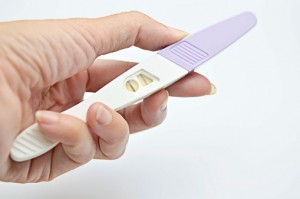Putting Knowledge into Practice: Childhood Obesity Prevention Programs
Changing a child’s life is a powerful motivator. The aim of childhood obesity prevention programs is to change children’s health and wellness for the better. By educating children about nutrition, exercise, and healthy habits, programs can positively affect scores of children who are currently struggling with their weight and health. Childhood obesity prevention can be accomplished through three things: education, increased physical activity, and an offering an abundance of healthy food choices. Learn more about childhood obesity prevention.
Educate for Positive Change
To be the most effective, childhood obesity prevention programs should come in many forms, through many channels. Incorporating health and wellness education into schools is an important component. After all, the classroom is where come to learn. However, health and wellness education shouldn’t be confined to the classroom. Educating families and communities on the benefits of a healthy diet and the importance of an active lifestyle can be even more powerful. By involving whole families, rather than targeting children in isolation, programs can help build a strong support system and a healthy lifestyle for everyone.
Ramp It Up
Teaching children the importance of daily exercise can have profound benefits for their lives. From increased energy levels to weight management, physical activity can forge stronger bodies and more active minds. Programs often focus on educating children about different types of exercise and their benefits. Exposing children to a wide range of options increases the chances that they will find something appealing for them. However, a good childhood obesity prevention program shouldn’t stop at information. Instead, offer lessons and organized sport opportunities that focus on fun rather than competition to get reluctant participants to give activities a try.
Here are a few tips for making exercise more fun:
Find what appeals to individual children. Are they drawn to group sports? Do they like more individualized activities, like running, martial arts, or yoga? By providing children with opportunities to explore many options, you’ll increase the likelihood that they will find something they like and can stick with.
Incorporate smaller activities into daily routines. Try a few minutes of stretching in the mornings or five jumping jacks between math problems. One of the most powerful takeaways from exercise research is that even small increases in physical activity can have profound effects on a person’s health. Help children establish those habits early.
Encourage getting active with friends. Almost everything is more fun with a buddy. Programs can teach children to partner with friends and family for good health. Whatever your age, trying new things is less daunting with a friend by your side.
Set the Stage with Healthy Foods
As critical as education is to preventing childhood obesity, childhood obesity prevention programs recognize that the food within a child’s reach is equally important. There are several ways that programs try to improve the quality of food choices available to children:
Offering healthier school lunchroom choices
Coordinating low cost or free summer lunch programs
Leading healthy cooking classes
Working with families to stock healthier pantries
Childhood obesity prevention programs come in many forms, all of which are valuable. From providing online resources and interactive games for children to forming clubs, offering after-school activities, and educating in schools and communities, these programs work hard to give children a better chance for healthy lives.
- DON'T MISS
- Healthy Weight Loss Supplements
- Health As Habit: Nutrition, Exercise, And Weight Loss
- What to Expect After Gastric Bypass Surgery
- Dieting? Upgrading Your Non-Conscious – Part 1
- Want to Lose Weight? Plan for Pleasure
- Exercise and Low Carb Diet’s Make Poor Partners
- The Scale Is Not Your Friend
- The #1 Factor In Your Fitness Success
- Fight Obesity – Let’s Lose Weight!
- Conventional Dieting Wisdom That Works for WLS Patients




